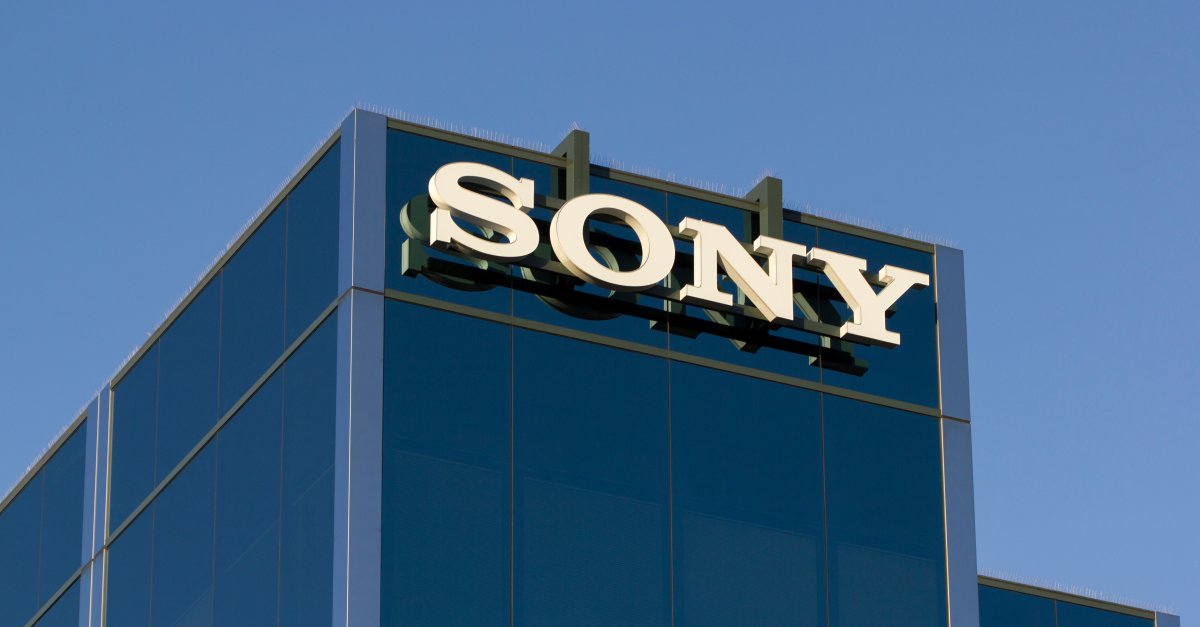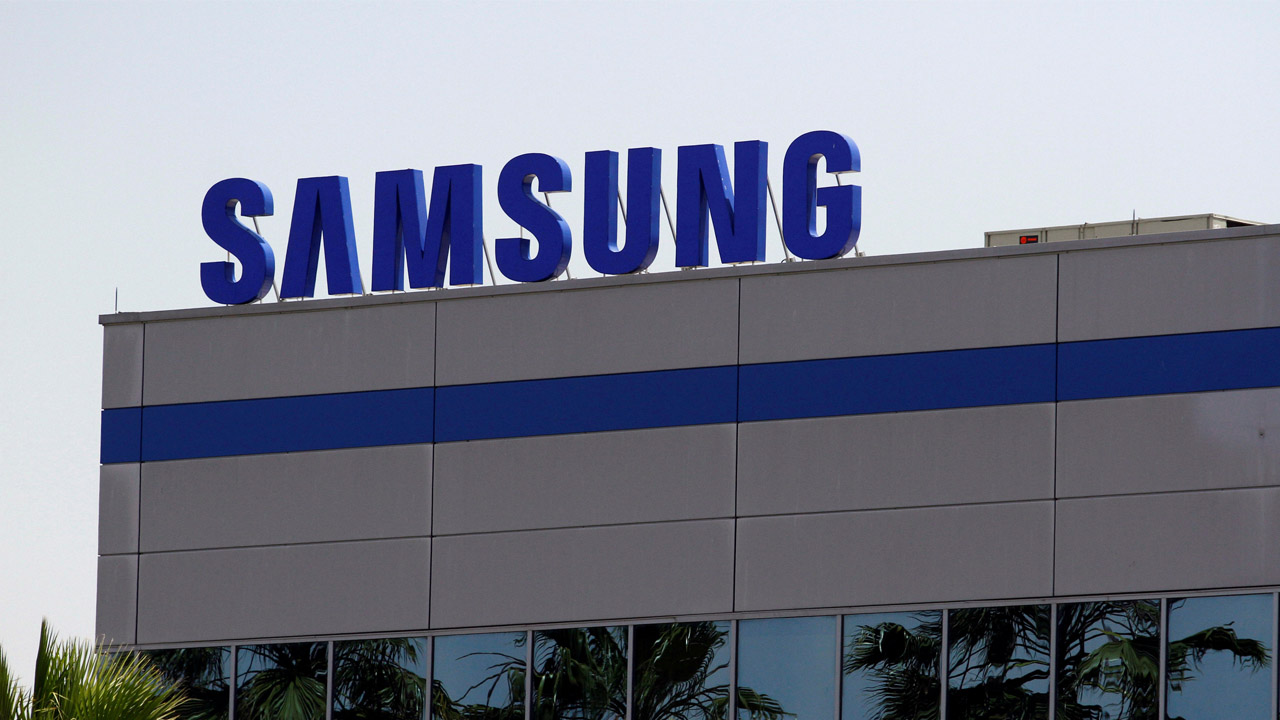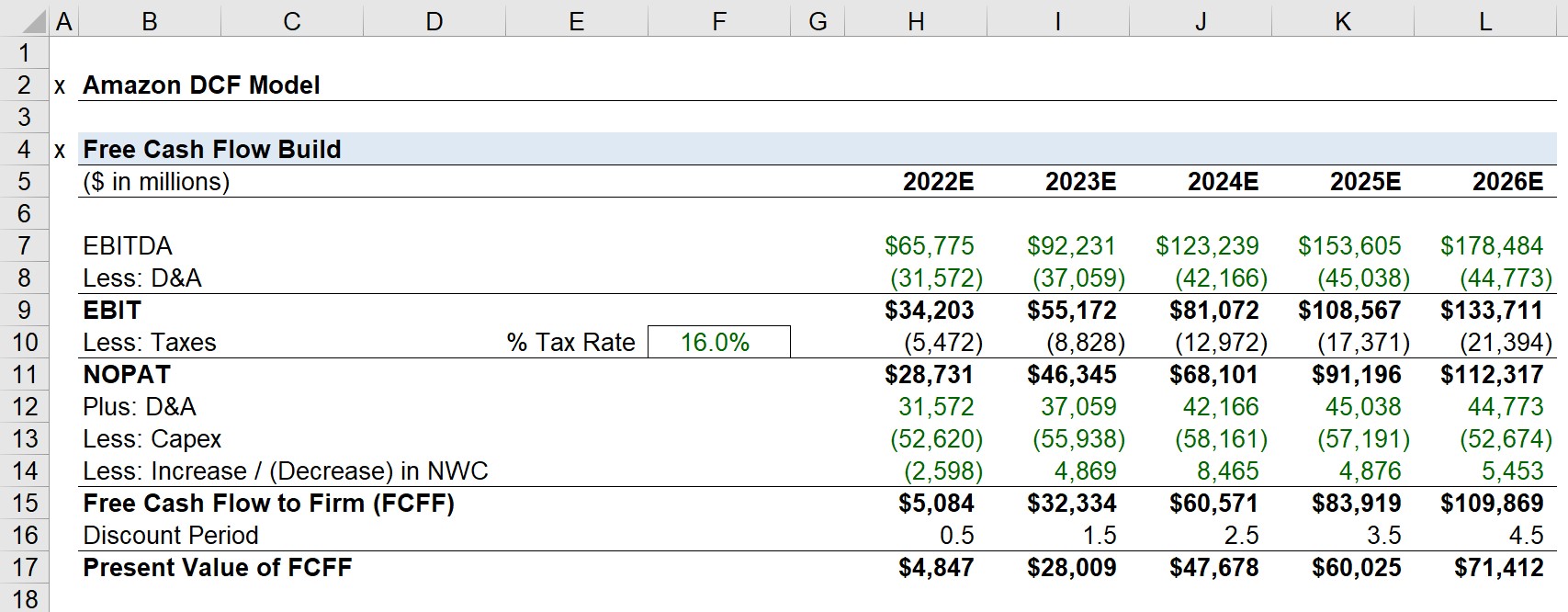

Finance
What Is Sony’s Capital Structure
Published: December 25, 2023
Discover Sony's capital structure and gain insights into the company's financial position. Explore the finance behind Sony's operations and investment strategies.
(Many of the links in this article redirect to a specific reviewed product. Your purchase of these products through affiliate links helps to generate commission for LiveWell, at no extra cost. Learn more)
Table of Contents
Introduction
Welcome to our in-depth exploration of Sony’s capital structure. In the world of finance, capital structure refers to the combination of debt and equity financing that a company utilizes to fund its operations and investments. This blend of debt and equity plays a crucial role in shaping a company’s financial health and can have a significant impact on its overall performance.
Sony, a multinational conglomerate based in Tokyo, Japan, is widely recognized for its diverse portfolio of businesses, including electronics, entertainment, gaming, and financial services. As one of the leading players in the global market, Sony’s capital structure is of great interest to investors, analysts, and enthusiasts alike.
In this article, we will delve into Sony’s capital structure, analyzing the proportion of debt and equity it employs to finance its operations. We will also explore how this capital structure impacts the company’s financial performance and compare it to its competitors in the industry.
Understanding Sony’s capital structure is crucial as it provides insights into the company’s risk profile, sustainability, and ability to generate returns for its shareholders. By evaluating the composition of debt and equity within Sony’s capital structure, we can gain a deeper understanding of the company’s financial stability and growth potential.
Join us as we embark on this journey to unravel Sony’s capital structure and shed light on the factors that contribute to its financial success. By the end of this article, you will have a comprehensive understanding of how Sony leverages its capital structure to thrive in the dynamic and competitive world of business.
Definition of Capital Structure
Before we dive into Sony’s capital structure, let’s first establish a clear understanding of what capital structure represents in the realm of finance.
Capital structure refers to the mix of debt and equity financing that a company employs to support its operations and investments. Debt financing involves raising funds through loans, bonds, or other forms of debt instruments, which results in the company having financial obligations to repay these borrowed funds over a specific period, along with interest payments.
On the other hand, equity financing entails raising capital by issuing shares of stock or retaining earnings. Unlike debt, equity financing does not generate specific repayment obligations but involves the selling of ownership stakes in the company. Shareholders who invest in the company through equity financing become partial owners and may receive dividends or benefit from capital appreciation.
The capital structure of a company is determined by the balance between debt and equity. This balance is influenced by several factors, including the company’s risk appetite, desired level of financial leverage, cost of capital, and access to different sources of funding.
The capital structure decision is crucial as it directly impacts a company’s financial performance and risk profile. A well-structured capital mix can enhance a company’s efficiency, profitability, and ability to pursue growth opportunities. Balancing debt and equity financing offers advantages such as tax savings from interest deductions, lower cost of capital, and the ability to leverage shareholders’ equity.
However, excessive reliance on debt financing may lead to higher interest expense, increased financial risk, and potential limitations in the company’s ability to secure further debt. On the other hand, a high proportion of equity financing may dilute existing shareholders’ ownership and decrease earnings per share.
By carefully managing its capital structure, a company can optimize its financial health, minimize risk, and create value for its stakeholders. Now, let’s delve into the specifics of Sony’s capital structure and gain insights into how the company utilizes debt and equity financing to support its diverse operations and drive financial performance.
Sony’s Capital Structure
Now that we have a solid understanding of capital structure, let’s take a closer look at how Sony, the renowned multinational conglomerate, has structured its capital to support its wide-ranging business activities.
Sony employs a balanced capital structure that combines both debt and equity financing to fund its operations, investments, and strategic initiatives. The company utilizes a prudent approach to ensure financial stability while seizing growth opportunities in various sectors.
As of the latest available information, Sony Corporation had a healthy mix of debt and equity in its capital structure. The company made use of long-term debt, short-term debt, and equity financing to support its operations and fund investments.
Debt financing plays a significant role in Sony’s capital structure, with the company relying on bonds and loans to secure funds for its projects. This allows Sony to take advantage of tax benefits associated with interest payments and maintain control over its operations.
Equity financing is also a key element of Sony’s capital structure, with the company having a substantial number of outstanding common stock shares. This equity allows Sony to raise funds by issuing additional shares or retaining earnings for reinvestment in the business.
Overall, Sony’s capital structure demonstrates a careful balance between debt and equity financing. This strategic approach enables the company to maintain financial stability, meet its obligations, and invest in new technologies and business ventures.
Now that we have learned about Sony’s capital structure, let’s delve deeper into the analysis of its composition and examine the impact it has on the company’s financial performance.
Analysis of Sony’s Capital Structure
Examining the composition of Sony’s capital structure provides valuable insights into the company’s financial health and risk profile. By analyzing the proportion of debt and equity financing, we can assess how Sony balances its funding needs while managing its financial obligations.
One way to analyze Sony’s capital structure is by looking at its debt-to-equity ratio, which measures the level of debt relative to equity. A lower debt-to-equity ratio indicates a more conservative capital structure, while a higher ratio suggests a higher level of financial risk. Sony’s debt-to-equity ratio has remained relatively stable in recent years, reflecting a prudent approach to managing its capital structure.
Another important aspect to consider is the interest coverage ratio, which measures a company’s ability to meet interest payments on its debt using its operating income. A higher interest coverage ratio indicates a stronger ability to service debt obligations. Sony has maintained a healthy interest coverage ratio, indicating its ability to generate sufficient income to cover interest costs.
In addition to these ratios, it is important to analyze the cost of capital for Sony. The cost of capital represents the overall return expected by investors in exchange for providing funds to the company. Sony’s cost of capital is influenced by factors such as the interest rates on its debt and the required rate of return expected by equity investors. By keeping its cost of capital in check, Sony can effectively allocate resources and pursue growth opportunities.
Furthermore, it is crucial to evaluate the maturity profile of Sony’s debt. A well-managed capital structure includes a balanced mix of short-term and long-term debt. Sony has been successful in maintaining a diversified maturity profile, reducing the refinancing risk associated with a concentrated debt schedule.
Overall, the analysis of Sony’s capital structure indicates a prudent and well-managed approach to balancing debt and equity financing. The company’s solid debt-to-equity ratio, healthy interest coverage ratio, controlled cost of capital, and diversified debt maturity profile illustrate Sony’s commitment to maintaining financial stability while pursuing growth.
In the next section, we will explore the two main components of Sony’s capital structure in more detail: debt financing and equity financing.
Debt Financing
Debt financing plays a crucial role in Sony’s capital structure, allowing the company to secure funds for its operations, investments, and other financial needs. By issuing bonds and taking out loans, Sony can tap into the debt market and access additional capital to support its growth.
Sony’s debt financing consists of both long-term debt and short-term debt obligations. Long-term debt typically includes bonds with maturities of more than one year, while short-term debt consists of obligations that are due within one year.
The issuance of bonds is a common method of raising long-term debt for Sony. These bonds are essentially loans from investors who purchase the bonds and receive fixed interest payments over the bond’s term. At maturity, Sony repays the principal amount to the bondholders. By utilizing bonds, Sony can take advantage of favorable interest rates and lock in long-term financing for its strategic initiatives.
In addition to bonds, Sony also utilizes loans as a form of debt financing. These loans can come from various sources, such as commercial banks or financial institutions. Loans provide Sony with flexibility in terms of loan duration, interest rates, and repayment terms.
The use of debt financing offers certain advantages for Sony. Firstly, the interest payments made on debt are often tax-deductible, resulting in potential tax savings for the company. Secondly, by leveraging debt, Sony can achieve a higher return on investment if the funds borrowed are invested in projects with expected returns that exceed the cost of debt.
While debt financing can provide benefits, it also carries certain risks. Sony must ensure it can manage its debt obligations and repay principal and interest on time. Failure to meet these obligations can lead to financial distress and affect the company’s creditworthiness.
Overall, debt financing forms an integral part of Sony’s capital structure, enabling the company to access additional capital, seize growth opportunities, and optimize its financial structure. Through careful management and balance, Sony can utilize debt financing to support its strategic objectives and enhance shareholder value.
In the next section, we will explore the second component of Sony’s capital structure: equity financing.
Equity Financing
Equity financing is a significant component of Sony’s capital structure, providing the company with the necessary funds to support its operations, research and development, and growth initiatives. Through equity financing, Sony can raise capital by issuing shares of its common stock or retaining earnings within the company.
Sony has a substantial number of outstanding common stock shares, which represents the ownership stakes held by investors in the company. Shareholders who hold Sony’s common stock have the potential to benefit from the company’s success through capital appreciation and receiving dividends.
One way Sony utilizes equity financing is by issuing additional shares of common stock. This can occur through secondary public offerings or private placements. By issuing new shares, Sony can raise capital to finance new projects, acquisitions, or other business ventures. This approach allows the company to leverage the strength of its brand and market position to attract new investors and generate funds for growth opportunities.
Retaining earnings is another method of equity financing employed by Sony. Rather than distributing all of its profits to shareholders in the form of dividends, Sony retains a portion of the earnings within the company. This retained earnings are reinvested into the business to fund research and development, expand operations, or reduce debt. Retaining earnings allows Sony to strengthen its financial position and reinvest in strategic initiatives without diluting existing shareholders’ ownership.
Equity financing offers several advantages for Sony. Unlike debt financing, equity financing does not create a fixed obligation to make interest or principal payments. This gives Sony more flexibility in managing its cash flows and reduces the financial risk associated with debt obligations. Additionally, equity financing allows Sony to share the risks and rewards of its business ventures with its shareholders.
However, there are considerations to be aware of when utilizing equity financing. Issuing additional shares can dilute ownership and reduce earnings per share for existing shareholders. Sony must strike a balance between raising capital through equity financing and maintaining the value and returns attributable to its existing shareholders.
Overall, through equity financing, Sony can access additional capital and align the interests of shareholders with the company’s success. By strategically utilizing equity financing alongside debt financing, Sony can optimize its capital structure and continue to drive its growth and profitability.
In the following section, we will explore the impact of Sony’s capital structure on its financial performance and compare it with its competitors.
Impact of Sony’s Capital Structure on Financial Performance
The capital structure of Sony has a significant impact on the company’s financial performance and overall success. The balance between debt and equity financing influences various aspects of Sony’s operations and can affect its profitability, risk profile, and ability to generate returns for shareholders.
One key aspect is the cost of capital. The mix of debt and equity financing determines the cost of capital for Sony. The cost of capital represents the return expected by investors in exchange for providing funds to the company. By carefully managing its capital structure, Sony can optimize its cost of capital, allowing the company to allocate resources efficiently and pursue projects that provide the highest returns.
A well-structured capital mix can also impact profitability. Debt financing allows Sony to leverage its operations and generate higher returns on investment. However, excessive debt can lead to higher interest payments and decrease profitability. By maintaining an optimal balance between debt and equity financing, Sony can maximize its profitability and carry out its growth strategies.
The risk profile of Sony is also influenced by its capital structure. A higher proportion of debt financing increases the financial risk for the company, as it must meet interest and principal payments on time. Conversely, a higher proportion of equity financing reduces financial risk but may result in higher dilution of ownership for existing shareholders. Sony must strike a balance between the two to mitigate risk while maintaining growth opportunities.
Furthermore, the capital structure of Sony affects its access to external financing. A well-managed capital structure increases the company’s credibility and improves its ability to obtain favorable terms for debt and equity financing. A strong capital structure also enhances Sony’s financial flexibility, ensuring it can respond to market opportunities and challenges effectively.
Investors and stakeholders closely monitor Sony’s capital structure as it reflects the financial health and long-term sustainability of the company. A solid capital structure indicates that Sony has the necessary resources and strategies in place to weather economic downturns and seize growth opportunities.
It is important to note that Sony’s capital structure is dynamic and can evolve over time in response to market conditions, changes in business strategy, and industry dynamics. The company continuously assesses its capital structure to ensure it remains optimal and aligned with its long-term goals.
In the next section, we will compare Sony’s capital structure with that of its competitors to gain further insights into its financial position and competitive edge.
Comparison with Competitors
Understanding Sony’s capital structure becomes more meaningful when we compare it with the capital structures of its competitors within the industry. This analysis provides valuable insights into how Sony’s financing choices and overall financial health stack up against its peers.
When comparing Sony’s capital structure, we consider factors such as the debt-to-equity ratio, interest coverage ratio, and cost of capital in relation to its competitors. This comparison allows us to gauge the company’s financial position relative to industry standards and identify any areas of strength or weakness.
For example, if Sony has a lower debt-to-equity ratio compared to its competitors, it suggests a more conservative approach to financing and potentially lower financial risk. On the other hand, a higher debt-to-equity ratio may indicate a higher level of leverage and financial risk but also the potential for higher returns.
Additionally, evaluating the interest coverage ratio helps determine how well Sony can meet its interest obligations compared to its competitors. A higher interest coverage ratio suggests a greater ability to service debt and indicates a strong financial position.
Comparing the cost of capital is also insightful. If Sony’s cost of capital is lower than that of its competitors, it may indicate that the company has a competitive advantage in accessing cheaper financing, giving it more flexibility to invest in growth opportunities.
It is crucial to consider the industry dynamics when making these comparisons. Different sectors and companies within the industry may have different optimal capital structures based on their unique characteristics and risk profiles. Therefore, we must consider these differences when assessing the strength and competitiveness of Sony’s capital structure in relation to its peers.
By conducting a comprehensive comparison with competitors, we can gain a clearer perspective on Sony’s capital structure and its standing within the industry. This analysis helps investors, analysts, and stakeholders evaluate the company’s financial stability, growth potential, and overall competitiveness.
As we conclude our analysis, it is important to note that capital structures can evolve over time. Sony continually manages and adjusts its capital structure to align with its strategic objectives and market conditions. Regular monitoring and analysis of Sony’s capital structure against its competitors will help paint a holistic picture of the company’s financial well-being.
Next, we will wrap up our exploration of Sony’s capital structure with a brief summary and concluding thoughts.
Conclusion
Throughout this article, we have delved into the significance of Sony’s capital structure, analyzing the blend of debt and equity financing that the company utilizes to support its operations and drive its financial performance.
Sony has demonstrated a balanced and well-managed capital structure, strategically leveraging both debt and equity financing. Its capital structure has remained stable, reflecting a prudent approach to managing financial obligations and positioning the company for growth.
Debt financing has allowed Sony to secure additional capital while taking advantage of tax benefits and maintaining control over its operations. The company has effectively managed its debt through a diversified maturity profile, ensuring it can meet obligations while minimizing refinancing risks.
Equity financing, through the issuance of common stock and retained earnings, has provided Sony with flexibility and financial stability. This method allows the company to align the interests of shareholders with its success and invest in strategic initiatives without solely relying on debt.
The capital structure of Sony has had a significant impact on its financial performance. By optimizing its cost of capital, the company has been able to allocate resources efficiently and pursue projects that generate strong returns. Additionally, Sony’s well-structured capital mix has enhanced its profitability, reduced financial risks, and improved access to external financing.
Comparing Sony’s capital structure with its competitors provides valuable insights into its financial position and competitive edge within the industry. Understanding how Sony’s financing choices and financial health stack up against its peers helps evaluate its overall strength and potential.
In conclusion, Sony has successfully managed its capital structure to support its diverse business activities, maintain financial stability, and drive growth. By striking a balance between debt and equity financing, the company has positioned itself for long-term success in the dynamic and competitive world of business.
As the market evolves and Sony continues to pursue new opportunities, monitoring and evaluating its capital structure will remain crucial for investors, analysts, and stakeholders. By keeping a keen eye on its financial structure, Sony can adapt and thrive in changing market conditions, ultimately delivering value to its shareholders.














